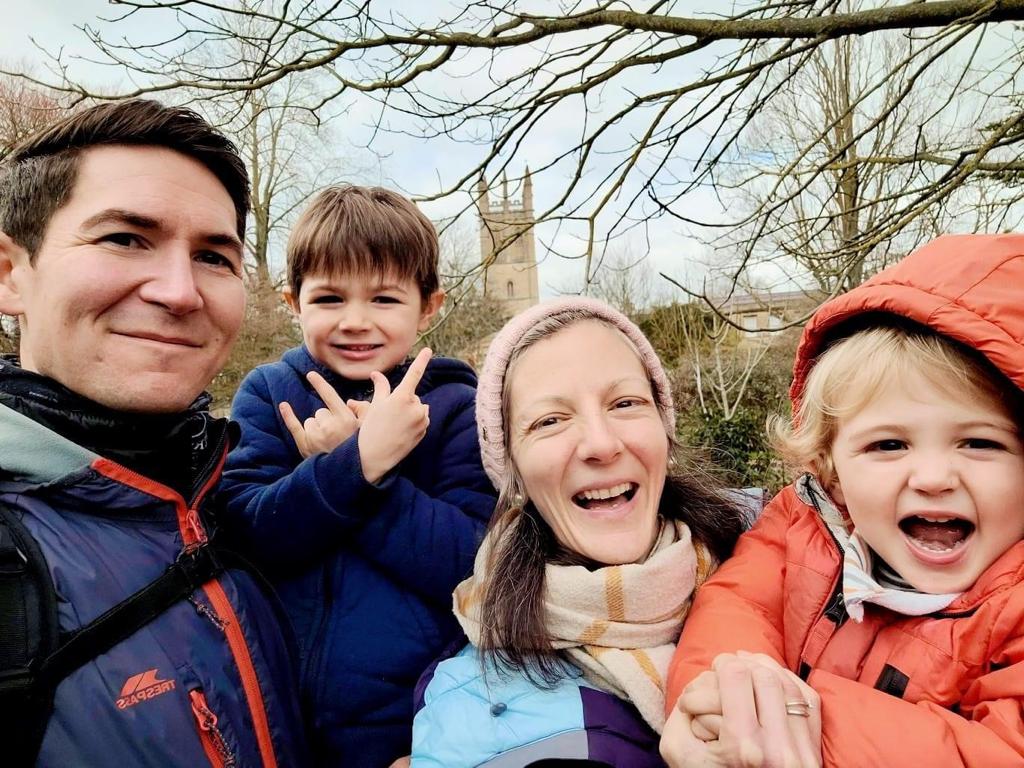
My 2.5-year journey with translocation renal cell carcinoma
April 30, 2024
This is a guest post by Dawn Dyson, 37, who was diagnosed with translocation renal cell carcinoma in 2022. Dawn…
Read More
This is a guest post by D’Ann George, PhD, Medical Writer.
Joel Stern vividly remembers the first time he saw the phrase palliative care in his medical file. At the time, in 2020, Stern had just been diagnosed with stage IV renal-cell carcinoma.
“I thought it was the equivalent of hospice, which I knew wasn’t something I wanted to see in my chart,” he wrote in a 2021 guest post for the Kidney Cancer Association’s blog. “I wish someone had explained to me exactly what palliative care is — and what it isn’t — before I saw it in my file.”
What Palliative Care is, and What it Isn’t

Julia Batten, a nurse practitioner at the Huntsman Cancer Center in Salt Lake City, Utah, describes palliative care as comprehensive symptom management that helps people experience a better quality of life while on active treatment for their cancer. Batten serves on the Clinical Advisory Board at the Kidney Cancer Association.
“Our goal is for them to be on therapies for as long as they’re deriving a benefit. So helping them with depression, fatigue, pain, insomnia, anxiety, appetite, nausea, vomiting, all the things that come along with a diagnosis of cancer and treatment for cancer,” said Batten.
In addition to being a multi-faceted form of support for patients, palliative care is also a medical specialty with board certification, explains Dr. Jennifer Temel. Temel herself is an oncologist whose research focuses on optimizing palliative and supportive care for patients with cancer and their families, at Massachusetts General Hospital (MGH) in Boston, MA.
As a medical specialty, Temel said that palliative care is more multi-disciplinary than traditional specialties.
“I’d say at most larger community settings or academic settings, it is very multidisciplinary and often includes advanced practice providers [such as nurse practitioners and physicians], chaplains, social workers and pharmacists,” said Temel.
Social workers and chaplains are there to help people deal with the complex emotions that people can feel, especially when they are newly diagnosed, said Batten.
Stern wrote that his palliative care team improved his quality of life by helping him focus on living in the moment.
“They helped me with being more mindful, which is the basic human ability to be fully present, aware of where we are and what we are doing, and to not be overly reactive and overwhelmed by what’s going on around us. This has helped me focus on things I never focused on . . . . blue skies, deer in the front yard, deep dish pizza with friends, watching football, playing tennis, and spending time with my family.
“All [are] examples of things I have always enjoyed, but I enjoy it differently today than I did before. It has helped me so much in coping with this disease,” wrote Stern.
A common misconception is that receiving – or asking for – palliative care means that a person is nearing the end of their life or is giving up on life-saving treatments, said Batten.
In contrast to palliative support, hospice care doesn’t begin until people decide to stop treatment and their physician confirms that their time for living is less than six months.
“In the U.S., mostly we can’t enroll patients in hospice if they’re receiving cancer active therapy,” said Temel. “There are some caveats, but for the most part, that’s the case. So once the patient and the clinician decide that they’re not going to be doing more cancer-directed therapy, that would be the ideal time to enroll a patient in a hospice so they can get the care delivered at home.”
Hospice can, however, include many features of palliative care, such as pain management and emotional support.
Research on the Effects of Early Palliative Care: Is there a Downside?
Temel said that there are a few studies–at her institution, MGH, and at University of Alabama at Birmingham as well as some older studies–that have shown a potential survival advantage when people received early palliative care soon after their cancer diagnosis, compared to those who did not. These trials studied people with other forms of cancer, not kidney cancer.
In a clinical trial at MGH that studied people with metastatic non-small cell lung cancer, for example, medial survival was longer among people receiving early palliative care than those who received only the standard of care (11.6 months vs. 8.9 months). This advantage occurred even though people in the later group were more likely to receive aggressive care at the end of their lives.
People in the MGH study who received early palliative care also scored higher on assessments of their general quality of life and lower on assessments for depression.
“We have data that patients who get palliative care live at least as long and maybe longer as patients who don’t. And I think that’s something important that patients and their families know–that by maximizing your quality of life and your well-being and your health, that could actually help you live longer rather than worry that you’re making decisions that are going to shorten your life,” she said.
When asked if there could be any downside or adverse effects from receiving palliative care at any point after receiving a cancer diagnosis, Temel was definitive in her answer.
“No, no, no, no, no downside. Multiple studies have clearly shown that there is a wide number of benefits, but there has never been any negative outcomes to come out of a palliative care intervention.”
When and How to Request Palliative Care
Batten said that she often discusses the options available under the umbrella of palliative care as soon as someone receives a cancer diagnosis. “It’s part of the treatment plan,” she said.
Temel said that palliative care may begin at any time.

“We know that across all cancer types, patients are living longer and feeling better, which is wonderful. But I think that at any point, if a clinician, a patient or family feels like the patient has needs that aren’t being fully met, whether that’s physical symptoms, whether it’s psychological symptoms, whether it’s coping support . . . That’s the time that we shouldn’t hesitate and get them referred for that additional care and support,” said Temel.
Batten said that people should feel confident about voicing their need for support to any member of their care team–social worker, nurse practitioner, or physician.
Stern felt so strongly about the ways that he benefited from the services of his palliative care team that he made the memory a sizable chunk of the patient story he shared on KCA’s website:
“Palliative care is focused on providing relief from the symptoms and stress of the illness. The goal is to improve quality of life for both the patient and their family. It is appropriate at any age and at any stage in a serious illness, and it can be provided along with curative treatment. I have received so many benefits from the social workers, nurses, and physician’s assistants who address issues beyond treatment of the disease.
“What I have come to understand through palliative care is that, while there is no cure for people like me who have Stage IV RCC, there are opportunities to live a quality life for months if not years,” wrote Stern.